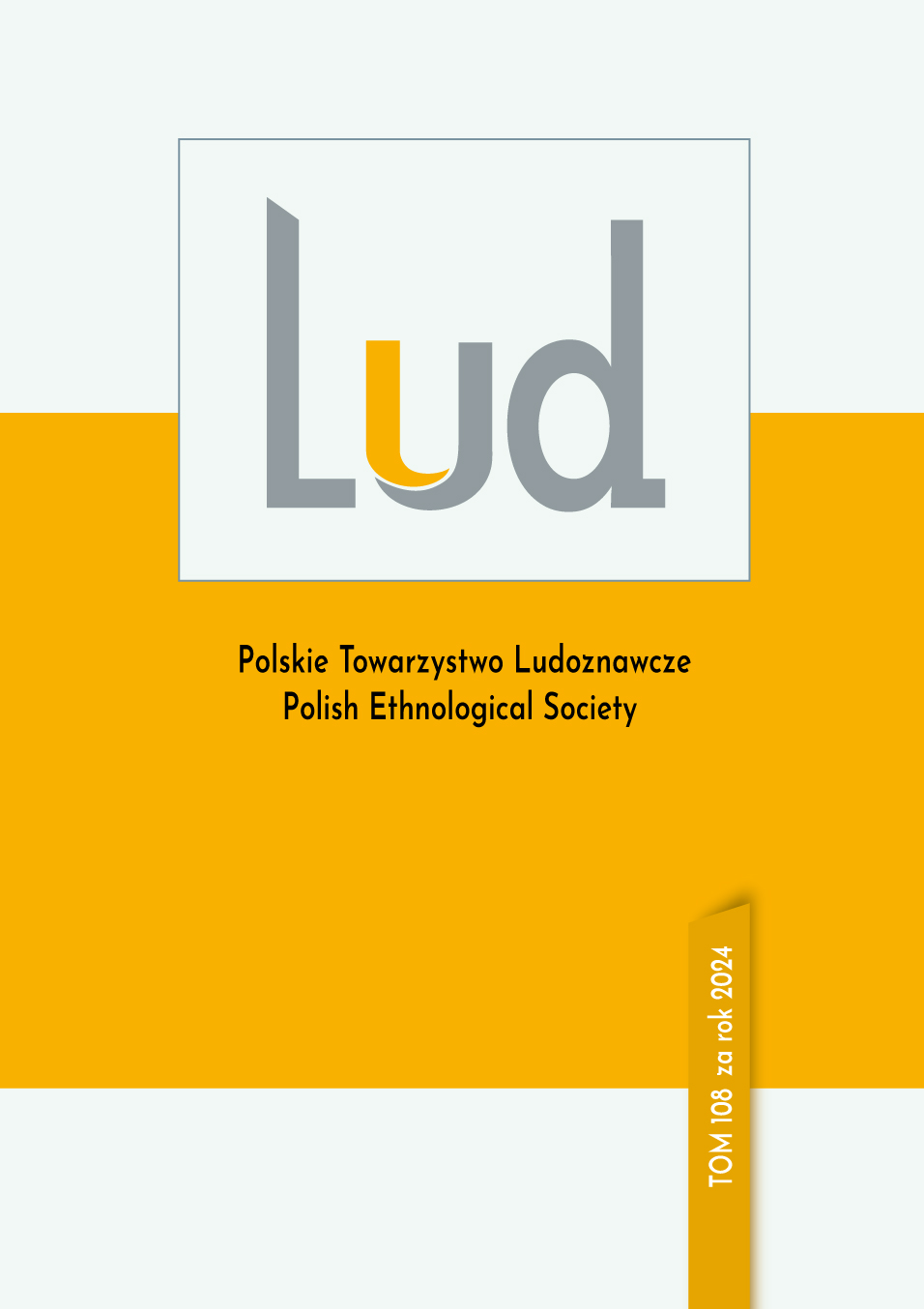Farming is a Grind. A Górale’s Perspective on Labour as a Local Heritage
DOI:
https://doi.org/10.12775/lud108.2024.02Keywords
praca, dziedzictwo, Podhale, ChochołówAbstract
During my recent ethnographic fieldwork research in Chochołów in the western Podhale region, I got the impression that the work of the Górale was one of the most valuable issues in everyday life. Although my research was about heritage, not directly about work, I decided to follow my interviewee’s voice and look specifically at work. I concluded that work is one of the most important references in the local value system. Not only is hard work valued and held up as a model, but it is also often presented as inherited. Even in 19th-century texts, one can read that Górale worked hard and that work was significant to them. Modern Górale also emphasise that they have diligence in their blood, that it is something setting them apart, and that it has always been so. Drawing on various theories from heritage studies, I aim to demonstrate that labour in the Podhale region can be viewed as a form of cultural heritage. This heritage juggles between the authorised and the unauthorised discourse, between the tangible and the intangible. Above all, it is linked to the production of locality, community, and a sense of uniqueness. It can, therefore, be seen, as Rodney Harrison wanted, as heritage in action.
References
Appadurai Arjun (1996) Modernity At Large. Cultural Dimensions of Globalization, Minnesota: University of Minnesota Press.
Bendix, R. (2022). Life itself. An essay on the sensory and the (potential) end of heritage making. Traditiones 50(1), 43–51. https://doi.org/10.3986/Traditio2021500104
Cooley, T. (2005). Making music in the Polish Tatras, Blumington–Indianapolis: Indiana University Press
Gillman, D. (2010). The Idea of Cultural Heritage. Revised Edition, Cambridge-New York: University Press
Górz, B. (2003). Społeczeństwo i gospodarka Podhala w okresie transformacji, Kraków: Wydawnictwo Naukowe Akademii Pedagogicznej.
Harrison, R. (2010). Heritage as Social Action [in:] S. West (ed.) Understanding Heritage in Practice (pp. 240- 276). Manchester: Manchester University Press.
Kamiński, L. (1992). O mieszkańcach gór tatrzańskich. Najdawniejsza monografia etnograficzna Podhala. Kraków: Oficyna Podhalańska.
Kirshenblatt-Gimblett Barbara (2011) From Ethnology to Heritage. The Role of Museum. “Etnografia Nowa/The New Ethnography”, 3, 125-136.
Kolberg, O. (1966) Lud. Jego zwyczaje, sposób życia, mowa, podania, przysłowia, obrzędy, gusła, zabawy, pieśni, muzyka i tańce, t. 44. Wrocław-Poznań: PTL.
Krzyworzeka, A. (2014). Rolnicze strategie pracy i przetrwania. Studium z antropologii ekonomicznej. Warszawa: WUW. https://doi.org/10.31338/uw.9788323514220
Lehr, U. Tylkowa, D. (2000). Wiadomości o regionie [in:] D. Tylkowa (ed.) Podhale. Tradycja we współczesnej kulturze wsi (pp. 11-33). Kraków: Instytut Archeologii i Etnologii PAN.
Macdonald Sharon (2013) Memorylands. Heritage and Identity in Europe Today, London-New York: Routledge.
Malewska-Szałygin A. (2002), Raj natury czy kombinat, Opcja na prawo no. 11/2002
Małanicz-Przybylska M., (2018), Między dźwiękami Skalnego Podhala. Współczesna góralszczyzna, Warszawa: WUW.
Pine Frances (2000) Kinship, gender and work in socialist and post-socialist rural Poland [in:] Gender, Agency and Change. Anthropological Perspective, red. Victoria Ana Goddard, London-New York: Routledge: 86-101.
Ptak E. (2019), Kobiety w migracjach międzynarodowych z Podhala. Przypadek Ludźmierza, Studia Migracyjne – Przegląd Polonijny, no. 4 (174), 77-99. doi: 10.4467/25444972SMPP.19.040.1135
Smith, L., (2006), Uses of Heritage, Abingdon, New York: Routlege.
Zadrożyńska, A. (1983). Homo faber i homo ludens. Etnologiczny szkic o pracy w kulturach tradycyjnej i współczesnej. Warszawa: PWN.
Downloads
Published
How to Cite
Issue
Section
License
Copyright (c) 2024 Maria Małanicz-Przybylska

This work is licensed under a Creative Commons Attribution-NoDerivatives 4.0 International License.
- The authors give the publisher (Polish Ethnological Society) non-exclusive license to use the work in the following fields:
- recording of a Work / subject of a related copyright;
- reproduction (multiplication) Work / subject of a related copyright in print and digital technique (ebook, audiobook);
- marketing of units of reproduced Work / subject of a related copyright;
- introduction of Work / object of related copyright to computer memory;
- dissemination of the work in an electronic version in the formula of open access under the Creative Commons license (CC BY - ND 3.0).
- The authors give the publisher the license free of charge.
- The use of the work by publisher in the above mentioned aspects is not limited in time, quantitatively nor territorially.
Stats
Number of views and downloads: 582
Number of citations: 0



